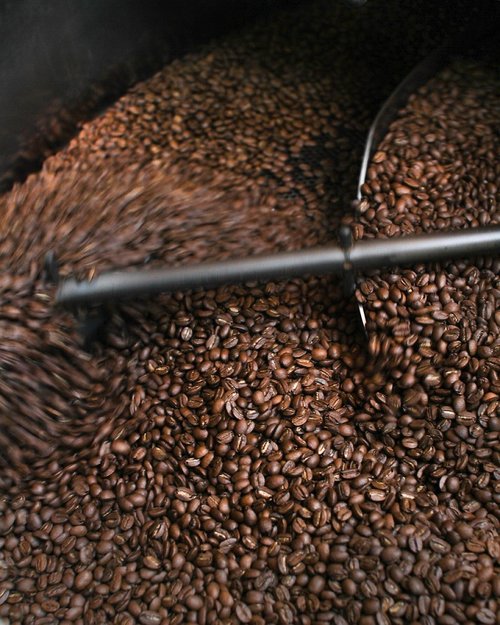
On Coffee Blending

WHAT IS COFFEE BLENDING?
Blending refers simply to mixing together two or more different coffees—usually, it means mixing two origins (say, a Yemen and Java for Moka Java), but it can also mean mixing together two different roast levels of the same coffee.
WHY BLEND COFFEE?
There are different reasons that people drink coffee—even the same person may be looking for a different experience depending on the day. One person might enjoy the intensity and novelty of an intensely fruity natural Ethiopia, but another might prefer the dependability and mildness (and cohesion with milk products) of a medium-roasted blend. Neither is more correct.
For the drinker who seeks an absolutely consistent coffee, a blend can be a great option.
A good blend can be greater than the sum of its parts.
Beyond consistency, there’s another really good reason to blend, and it is that a good blend can be greater than the sum of its parts.
Let’s say you like dark roasts, but what you don’t like is that they lack acidity. Add a light roast, and you get to enjoy the best of both worlds. Or let’s say we have one of those interesting, earthy Indonesians with fat body. But maybe if you added an African or a Central American coffee, you’d get more brightness and fruit flavors. And then you’d have a coffee that was literally like no other coffee in the world, balanced and delicious beyond what the two original coffees could offer. It’s often worth blending even very high grade coffees in these cases.
ESPRESSO BLENDS
Then, of course, there is espresso blending. Again, there is no correct answer to the question of whether or not to blend, but something to keep in mind is that the espresso brew process will highlight certain characteristics and mute others. For example, a dry-processed Brazil that is decent and nutty with good body in a pour-over can become deliciously chocolaty with suddenly impressive acidity and huge body in an espresso. Sometimes, because of this tendency, single origins can seem unbalanced in an espresso. A bright and fruity Colombia can become nothing but sour citrus with an espresso extraction. So blending can become even more of an aesthetic exercise when we blend for espresso.
COFFEE AGNOSTICISM
As with anything coffee, I am a passionately agnostic coffee purveyor. It is wonderful to focus on single origins and the people who grow them. It’s one of the best tools in our toolbox to fight poverty and ensure fair prices, and experiencing terroir through a specialty single origin is a delightful sensory experience. That said, blending can also be a great experience on the palate, and blending does not actually preclude transparency. For example, every one of our blends is made of coffees we offer as single origins. So, you know…drink what makes you happy.
HOW WE BLEND AT OUR ROASTERY: Necessity is the Mother of Vacuums
This is the Rube Goldberg machine we’ve built over the years to save our backs while blending coffee post-roast. Instead of hauling and lifting, we use pneumatic tubes to lift our beans. We actually have two other vacuum hoses for different processes (not shown in action), so there’s a possibility your coffee was vacuumed four times. 😂
RED ROCK STAFF PICKS: BEST BLENDS EDITION!

